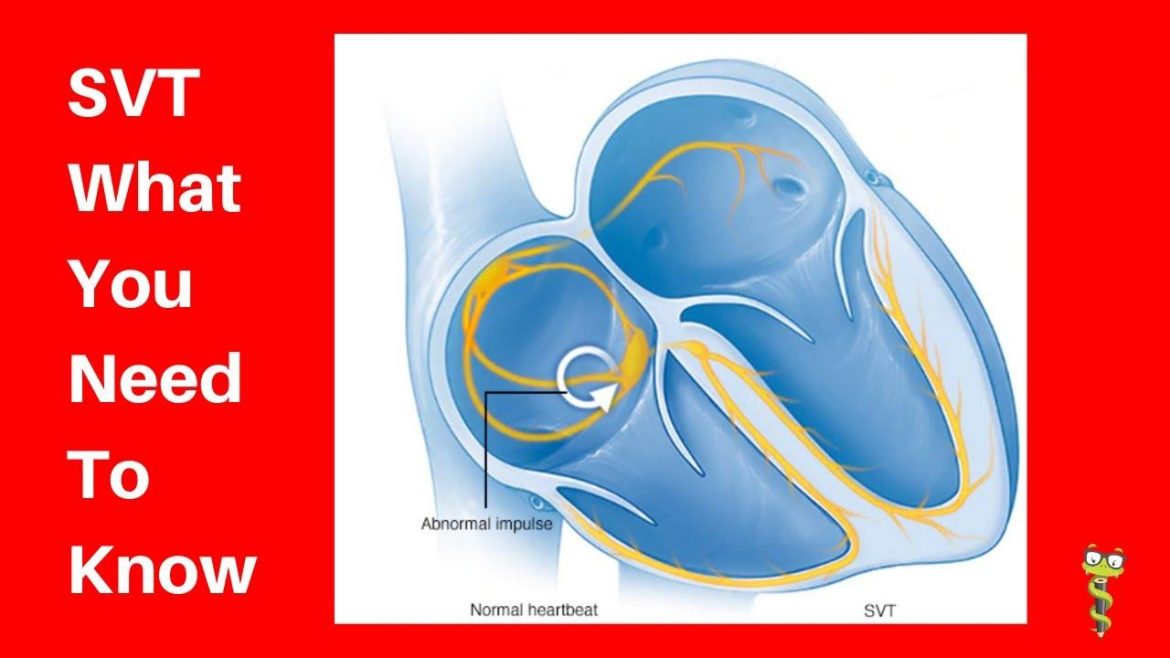Supraventricular tachycardia (SVT) is a common cardiac condition characterized by an abnormally fast heart rate originating above the ventricles of the heart. It is often a cause of concern for individuals experiencing palpitations, dizziness, and shortness of breath. In the realm of cardiology, there can be some confusion regarding whether SVT falls under the category of arrhythmias. This article aims to explore the nature of supraventricular tachycardia and its classification as an arrhythmia, providing insights from the perspective of a renowned cardiologist.
Understanding Arrhythmias
Before delving into the specifics of supraventricular tachycardia, it’s crucial to understand what arrhythmias are.
Arrhythmias refer to irregular heart rhythms that can manifest as too fast (tachycardia), too slow (bradycardia), or irregular heartbeats. These abnormalities can arise from various parts of the heart’s electrical system, leading to disruptions in the heart’s normal rhythm and function.
SEE ALSO: What Is The Cause of Paroxysmal Supraventricular Tachycardia
Characteristics of Supraventricular Tachycardia
Supraventricular tachycardia specifically involves rapid electrical impulses originating from areas above the ventricles, typically the atria or the atrioventricular node. This results in a heart rate exceeding the normal range, often reaching 150 to 250 beats per minute during episodes. SVT episodes can be sporadic or triggered by specific factors like stress, caffeine intake, or certain medications.
Types of Supraventricular Tachycardia
SVT encompasses several subtypes, each with its distinct characteristics and underlying mechanisms:
Atrioventricular Nodal Reentrant Tachycardia (AVNRT): This is the most common form of SVT, involving a reentrant circuit within the atrioventricular node.
Atrioventricular Reentrant Tachycardia (AVRT): AVRT occurs due to an accessory pathway between the atria and ventricles, leading to abnormal electrical conduction.
Atrial Tachycardia: In this type, rapid electrical signals originate from within the atria, bypassing the normal conduction pathways.
Atrial Fibrillation: Although technically a form of SVT, atrial fibrillation involves rapid and irregular electrical activity in the atria, leading to chaotic heartbeats.
Atrial Flutter: Similar to atrial fibrillation, atrial flutter involves rapid electrical activity in the atria but with a more organized pattern.
Diagnostic Methods for SVT
Diagnosing SVT requires a comprehensive evaluation, including:
Electrocardiogram (ECG/EKG): This non-invasive test records the heart’s electrical activity, helping identify abnormal rhythms characteristic of SVT.
Holter Monitor: A portable ECG device worn for 24 to 48 hours, capturing heart rhythms during daily activities to detect intermittent SVT episodes.
Event Monitor: Similar to a Holter monitor but worn for a longer duration, often triggered by symptoms or manually activated to record specific events.
Electrophysiology Study (EPS): Invasive procedure involving catheters to map the heart’s electrical pathways and identify the source of SVT for precise treatment planning.
Treatment Approaches for SVT
The management of SVT focuses on two primary aspects: acute episode termination and long-term prevention of recurrences. Treatment options include:
Vagal Maneuvers: Techniques like the Valsalva maneuver or carotid sinus massage can help stimulate the vagus nerve, slowing heart rate and terminating SVT episodes.
Medications: Antiarrhythmic drugs such as adenosine, beta-blockers, or calcium channel blockers may be prescribed to control heart rhythm and prevent future episodes.
Cardioversion: Electrical cardioversion delivers a controlled electric shock to restore normal heart rhythm in acute SVT cases.
Ablation Therapy: Catheter ablation involves the targeted destruction of abnormal cardiac tissue responsible for SVT, offering a potential cure for recurrent episodes.
Lifestyle Modifications: Avoiding triggers like caffeine, stress, and excessive alcohol consumption can help reduce SVT recurrence risk.
Is SVT Considered An Arrhythmia?
Now, addressing the question at hand: Is supraventricular tachycardia an arrhythmia? The answer is yes. SVT falls within the broader category of arrhythmias due to its characteristic of abnormal heart rhythm, specifically involving rapid rates originating above the ventricles. While it has distinct subtypes and mechanisms, SVT shares the fundamental feature of irregular electrical activity that defines arrhythmias.
Conclusion
In conclusion, supraventricular tachycardia is indeed classified as an arrhythmia, representing a group of rapid heart rhythms originating from areas above the ventricles. Understanding the nature of SVT, its subtypes, diagnostic approaches, and treatment options is essential for effective management and improving patients’ quality of life. As a renowned cardiologist, recognizing SVT as an arrhythmia underscores its significance in cardiovascular health and the importance of targeted interventions to address this common cardiac condition.

